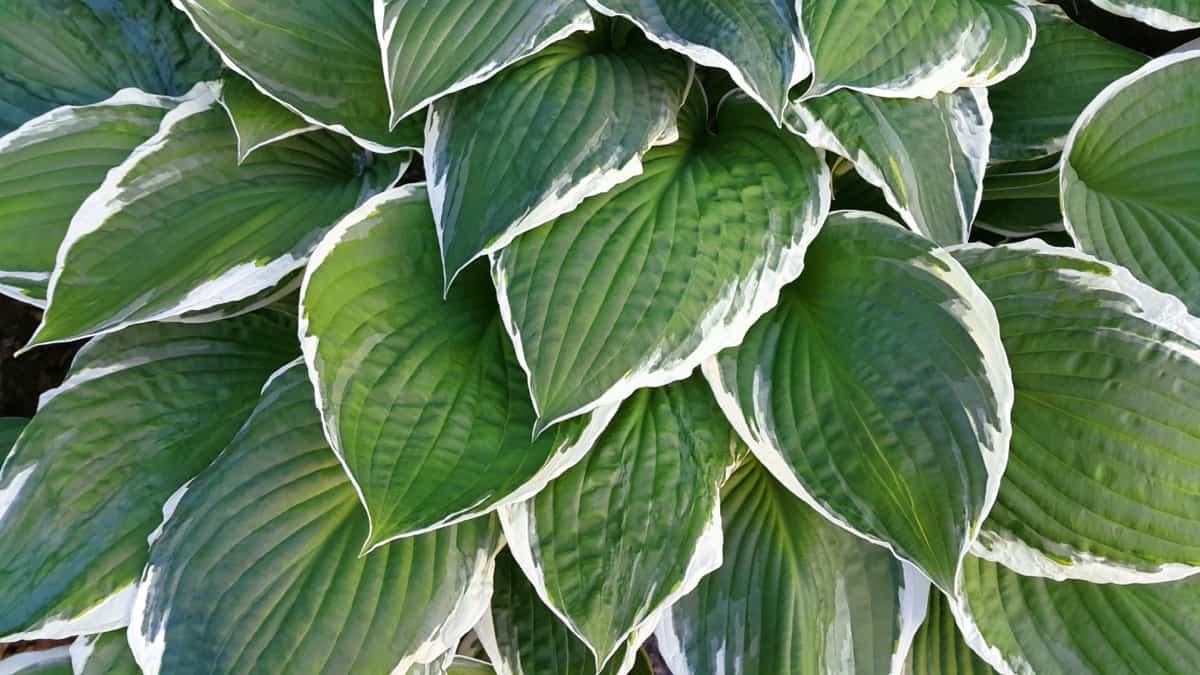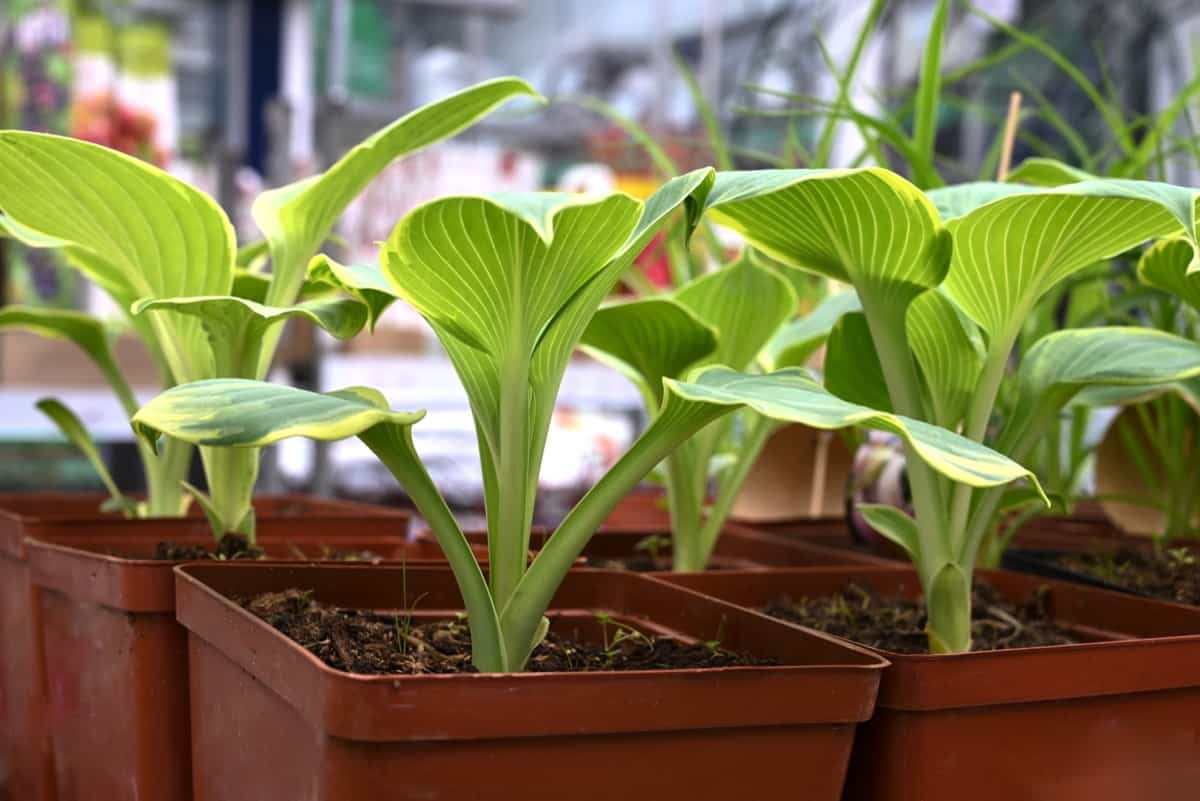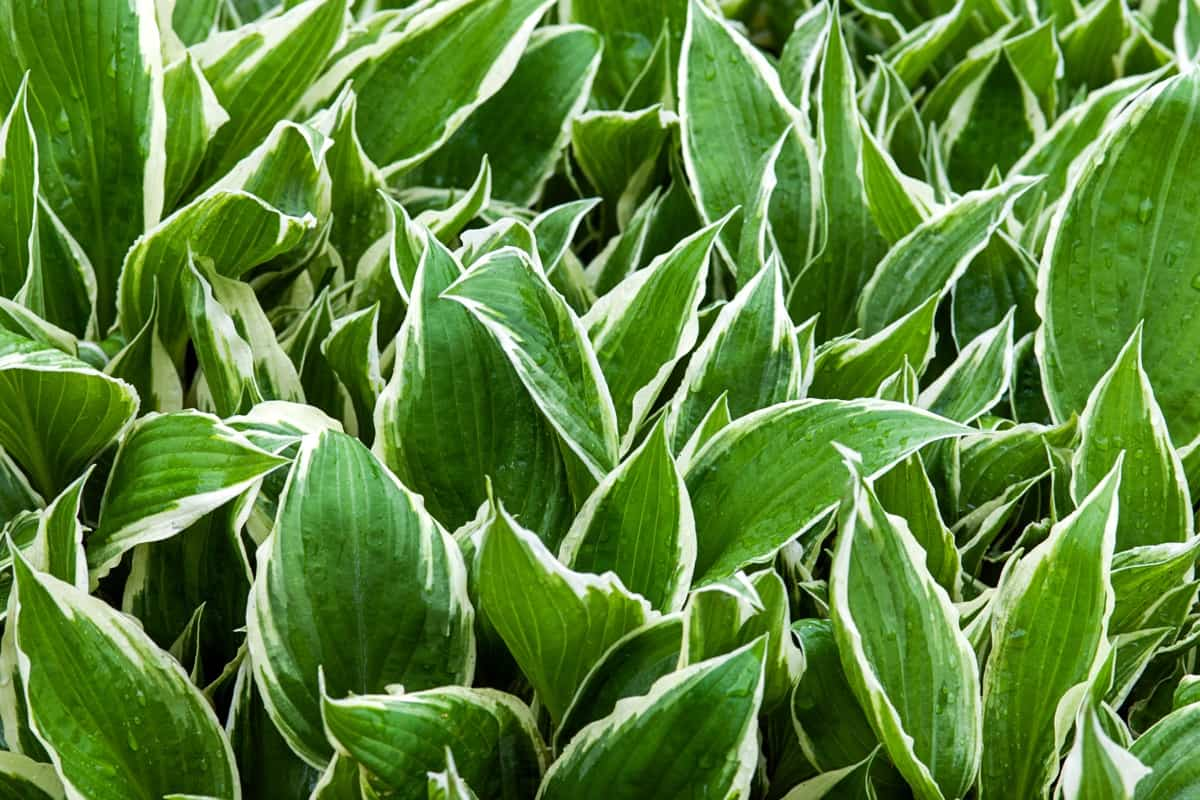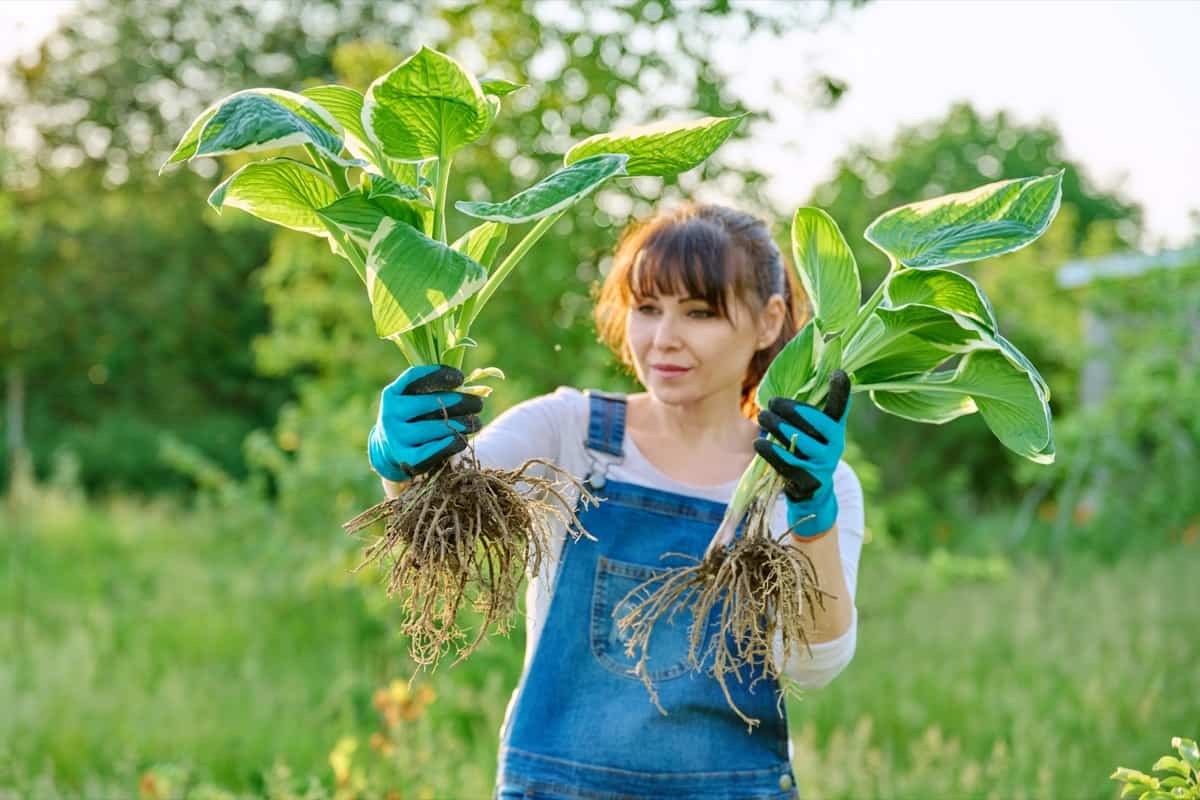While Hosta plants are generally hardy and easy to care for, they can still face their fair share of problems. Remember to regularly inspect your plants for signs of pests or diseases, such as leaf holes or discoloration. If you notice any issues early on, take immediate action to prevent further damage. Implementing proper cultural practices like providing adequate sunlight, moisture, and nutrients will also go a long way in maintaining the overall health of your Hostas. With patience and perseverance, you’ll find the best combination of treatments for your Hosta plant.

7 Common Problems with Hosta Plants
Yellowing Leaves on Hosta Plants: How to Fix It
One common cause of yellowing leaves in Hosta plants is overwatering. These plants prefer moist soil, but excessive watering can cause root rot and nutrient deficiencies. To fix this problem, only water your Hostas when the top inch of soil feels dry. Additionally, ensure proper drainage by planting them in well-draining soil or using containers with drainage holes. Another possible culprit behind yellowing leaves is inadequate sunlight exposure.
Hostas thrive in partial shade or filtered sunlight conditions. Consider moving your Hostas to a shadier spot or protecting them from intense sunlight. Nutrient deficiencies can also contribute to leaf yellowing in Hosta plants. Lack of nitrogen, iron, or magnesium can produce pale and yellowish foliage. A balanced fertilizer formulated specifically for Hostas can help replenish these essential nutrients and restore vibrant green coloration to the leaves.
Hosta Plant Leaves Turning Brown: How to Fix It
Hosta plants are known for their lush, vibrant green leaves, so it can be disheartening to see them turning brown. Brown leaves on Hostas are often a sign of stress or damage. One possible reason for browning leaves is inadequate watering. Hostas require consistent moisture, especially during the hot summer months.
In case you missed it: Best Foliage Plants for Indoors: Low-maintenance and Easy to Care

Ensure they receive about an inch of water per week from rainfall or supplemental irrigation. Pests can also wreak havoc on Hosta leaves, causing them to turn brown and develop holes. Slugs are a common culprit in Hosta gardens. To combat slug damage, try placing copper tape around the base of your plants or use organic slug baits.
Hosta Plant Crown Rot: Treatment and Solutions
Crown rot is a common problem affecting Hosta plants, causing their leaves to turn yellow or brown and eventually die. This fungal disease thrives in moist conditions, particularly if the soil is poorly drained. Luckily, there are treatment options available to help combat crown rot.
To begin treating crown rot in Hosta plants, it’s important first to identify the affected areas.
Look for signs of decay or discoloration at the base of the plant where the stems emerge from the ground. If you notice any soft or mushy tissue, this indicates crown rot. One effective treatment for crown rot is improving drainage around the plant. Ensure your Hostas are planted in well-draining soil, and avoid overwatering them. Additionally, removing any dead or decaying foliage will help prevent further spread of the disease.
Another option for combating crown rot is applying fungicides specifically designed for this purpose. According to package instructions, these products can be applied directly to the affected areas. Preventing future occurrences of crown rot involves maintaining good cultural practices such as proper watering techniques and adequate air circulation around your plants. Removing any infected plant material promptly and disposing it properly is also essential.
Fungal Diseases in Hosta Plants: Treatment and Solutions
One common fungal disease is leaf spot, which manifests as small, dark spots on the leaves. Removing any infected foliage and cleaning up fallen debris around the plant is crucial to combat this issue. Applying a fungicide specifically formulated for leaf spot can also help prevent further spread. Another fungal disease that affects Hostas is powdery mildew. This presents as a white or grayish powder on the leaves’ surface and can stunt growth if left untreated.
A simple remedy for powdery mildew is improving air circulation by spacing plants appropriately and providing adequate sunlight. Applying a fungicidal spray may also be necessary in severe cases. Root rot caused by fungi is another concern for Hosta plants. To address this issue, it’s essential to ensure proper drainage in the planting area and avoid overwatering. If root rot has already set in, carefully remove affected roots and replant in fresh soil with excellent drainage.
Hosta Plant Slug Damage: Treatment and Solutions
Slug damage can be a frustrating problem for Hosta plant owners. These slimy creatures can wreak havoc on the lush leaves of your Hostas, leaving behind unsightly holes and ragged edges. One effective treatment for slug damage is to create barriers around your Hosta plants. This can be done by placing copper tape or diatomaceous earth around the base of the plants. Slugs dislike crossing these substances due to their abrasive texture or electrical charge, effectively deterring them from reaching your precious foliage.
In case you missed it: How to Grow and Care for Hosta: Planting Instructions

Another solution is encouraging natural predators that feed on slugs, such as frogs, birds, or ducks, if you have a larger garden area. Creating suitable habitats for these creatures in your garden can help control the slug population naturally. If barriers and predators alone aren’t enough, you can also try using organic slug baits or traps specifically designed for controlling slugs in gardens. Regularly inspecting your plants and removing any slugs you find by hand is an additional step you can take towards reducing damage caused by these pesky pests.
Hosta Plant Winter Care
Winter can be challenging for Hosta plants, known for their lush foliage that thrives in the warmer months. However, with proper care and attention, you can ensure the survival of your Hostas through the cold winter season. Preparing your Hostas for winter is important by cutting back any dead or decaying foliage. This will help prevent disease and provide a clean slate for new growth in the spring.
Additionally, removing any fallen leaves or debris from around your plants will discourage pests and diseases from taking hold. Next, consider providing some protection for your Hostas during harsh winter weather. One option is to cover them to insulate the soil and protect against freezing temperatures. Alternatively, you can use burlap or frost cloth to create a barrier around the plants, shielding them from harsh winds and extreme cold.
Watering is another crucial aspect of winter care for Hostas. While they may not require as much water during this dormant period, keeping the soil slightly moist is still important. However, be mindful not to overwater since excessive moisture can lead to root rot.
Remember that even though your Hostas may appear dormant during winter, they still need light exposure. Place them in an area where they will receive at least partial sunlight throughout the day.
Nutrient Deficiencies in Hosta Plants: How to Fix It
| Nutrient Deficiency | Symptoms | Treatment |
| Nitrogen | This can cause pale green or yellow leaves with slowed growth | To rectify this issue, apply a balanced fertilizer to provide the necessary nourishment. |
| Iron | Yellowing leaves with green veins. | Consider using an iron chelate product specifically formulated for foliar application or amending the soil with iron sulfate to combat this. |
| Magnesium | Yellowing between leaf veins | Applying Epsom salts or dolomite lime can help replenish magnesium levels in the soil. |
| Potassium | Potassium deficiency may be evident when leaf margins turn brown and curl upwards. | Adding potash fertilizers can effectively address this issue. |
Note: The images presented in this post are intended solely for representation purposes. The images are meant to serve as visual aids and should not be relied upon as accurate representations of their real-life counterparts.
In case you missed it: How to Pollinate Bitter Gourd: Hand Pollination, Pollination Methods, and Tips

Conclusion
Hosta plants are popular for gardeners looking to add texture and variety to their landscape. However, like plants, they can face certain problems that need attention and care. By being aware of common issues such as slug damage, leaf scorch, and fungal diseases, you can take the necessary steps to fix them.
- Ultimate Guide to Ossabaw Island Hog: Breeding, Raising, Diet, and Care
- Ultimate Guide to Juliana Pig: Raising Facts, Size, Diet, Care, and Lifespan
- Raising Lleyn Sheep: Disadvantages, Price, Uses, Characteristics, and Care
- Ultimate Guide to Meishan Pig: Breed Facts, Breeding, Raising, and Care
- Ultimate Guide to Teacup Pigs: Raising, Diet, Lifespan, Cost, and Care
- Guide to Raising Poll Dorset Sheep: Facts, Profile, Characteristics, Uses, and Care
- Ultimate Guide to Bighorn Sheep: Characteristics, Diet, Lifespan, Breeding, and Lifecycle
- Ultimate Guide to Raising Katahdin Sheep: Farming Facts, Breed Profile, Uses, and Care
- Ultimate Guide to Raising Oreo Cows: Belted Galloways Farming Facts, Profile, Uses, and Care